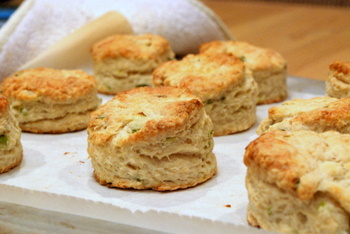A crowd-feeding turkey is the biggest thing that some of us cook during the year, and that often means that we need special cookware to accommodate its size and shape, while most oven-roasted meats and vegetables do just fine in smaller and shallower pans. A roasting pan should be big and fairly deep, about 3-4 inches, to hold all the drippings from your roast and any vegetables you want to cook alongside it. Even though it might not be your most-used kitchen pan, you’ll get much better results and have an easier time cooking if you put a little thought into choosing a roasting pan.
The first step is to measure your oven – and then take the measuring tape with you when you shop. You can’t entirely trust the measurements given by manufacturers, either of ovens or of baking pans. Ovens can have ridges (to hold up oven shelves) that narrow the available space in an oven, and while pans’ interior measurements may measure up as advertised, the thickness and shape of the pan may cause the actual dimensions of the thing to vary. And don’t forget to include the handles when you measure! Handles can extend up to 2-3 inches from the sides of a pan, inches that aren’t always listed with a pan’s standard dimensions.
Speaking of handles, you can choose from those that extend horizontally from the pan or rise up vertically. Vertical handles are space-saving, but they can be virtually impossible to grip with oven mitts on – especially if the fit in your oven is tight and you have to try and grab them when they’re against the oven wall. It’s much safer to choose horizontal handles that are wide enough to grip easily. Don’t buy a roasting pan without any handles unless you never plan to cook more than a pair of chicken thighs in it; lifting a pan with a 20-lb bird, several cups of turkey drippings and no handles is a recipe for a holiday burn. A similar warning could be given for very thin, disposable roasting pans; the thinner pans can warp during cooking and may not be strong enough to support the weight of a turkey for much time. If you’re using one, place it on a baking sheet to make taking it in and out of the oven easier.
I like pans that can go from the oven to the stove, so I can make gravy easily with pan drippings. It’s nice if the roaster is pretty enough to serve in, although it’s not crucial since you’ll need take the bird out to carve it anyway. A nonstick surface can be nice when it comes to cleaning the pan, but if you make pan gravy it’s not too difficult to scrape off any baked-on bits in advance. Similarly, it’s up to you (and the amount of space in your oven) if you want to get a rack to hold the turkey off the bottom of your roaster to try and crisp it all the way around. I don’t usually do this, and just let the meat cook in the juices, but it’s personal preference.
Keep this in mind when you’re looking at roasting pans and pick out one that works for you. I currently have an All-Clad Lasagna Pan that makes an excellent roasting pan, one both easy to use and easy to carry. The All-Clad French Oven is on the expensive side and is probably only a good choice if you use the roaster frequently, but it does offer horizontal handles and a beautiful design.The Mauviel Cookstyle Roasting Pan (pictured) has vertical handles that flare out over the sides, making them easy to grip, and a very sturdy stainless steel construction. Less expensive pans with similar qualities include the Cuisinart Chef’s Classic Roasting Pan and Chicago Metallic’s Nonstick Roasting Pan, which has an anodized aluminum finish that makes cleanup easy.





Cortney Broce
October 2, 2009Hey sehr sch?ne Blog! Man .. Beautiful .. Amazing .. I